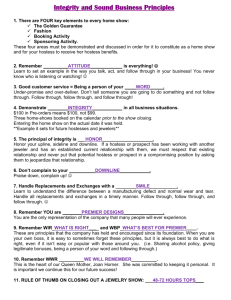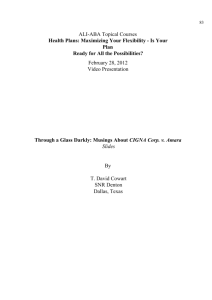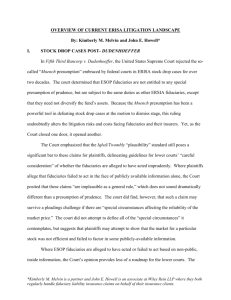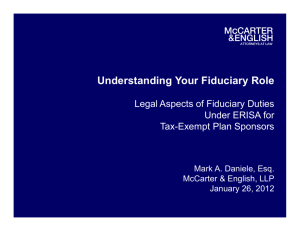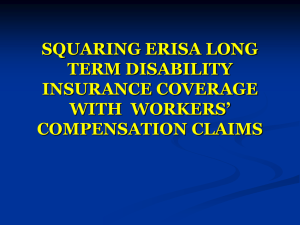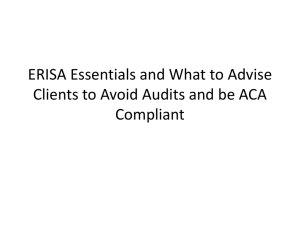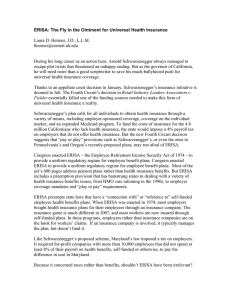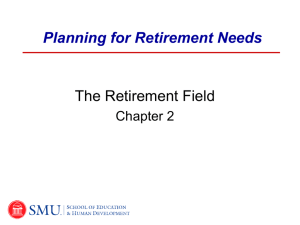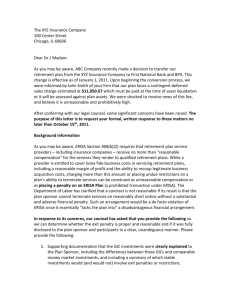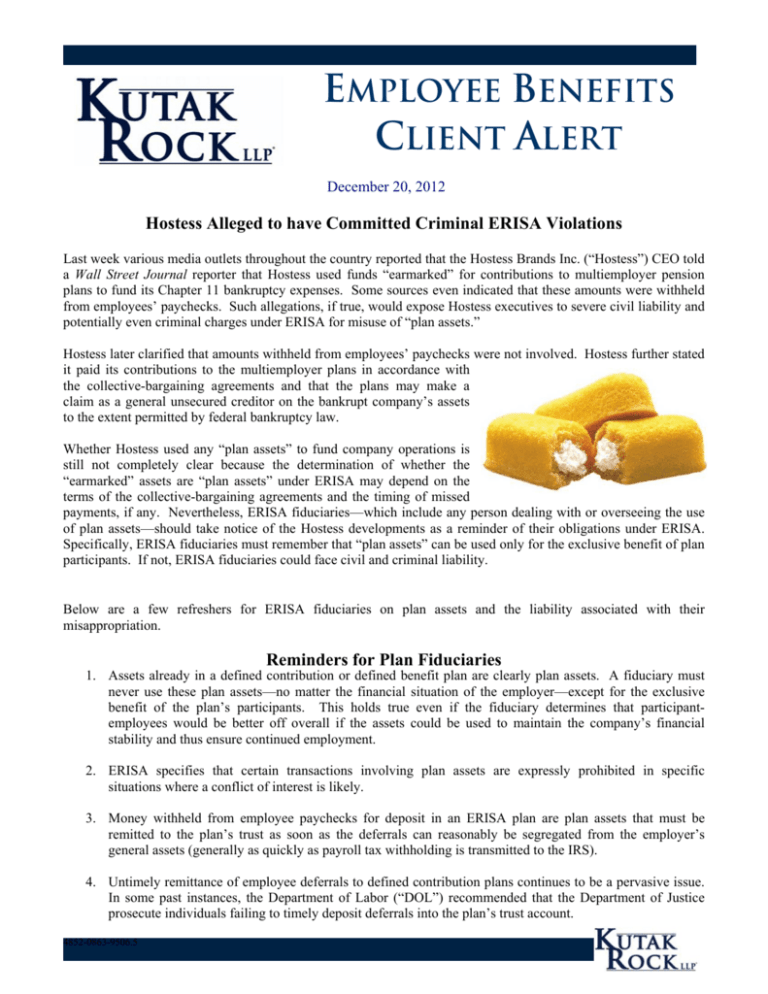
EMPLOYEE BENEFITS
CLIENT ALERT
December 20, 2012
Hostess Alleged to have Committed Criminal ERISA Violations
Last week various media outlets throughout the country reported that the Hostess Brands Inc. (“Hostess”) CEO told
a Wall Street Journal reporter that Hostess used funds “earmarked” for contributions to multiemployer pension
plans to fund its Chapter 11 bankruptcy expenses. Some sources even indicated that these amounts were withheld
from employees’ paychecks. Such allegations, if true, would expose Hostess executives to severe civil liability and
potentially even criminal charges under ERISA for misuse of “plan assets.”
Hostess later clarified that amounts withheld from employees’ paychecks were not involved. Hostess further stated
it paid its contributions to the multiemployer plans in accordance with
the collective-bargaining agreements and that the plans may make a
claim as a general unsecured creditor on the bankrupt company’s assets
to the extent permitted by federal bankruptcy law.
Whether Hostess used any “plan assets” to fund company operations is
still not completely clear because the determination of whether the
“earmarked” assets are “plan assets” under ERISA may depend on the
terms of the collective-bargaining agreements and the timing of missed
payments, if any. Nevertheless, ERISA fiduciaries—which include any person dealing with or overseeing the use
of plan assets—should take notice of the Hostess developments as a reminder of their obligations under ERISA.
Specifically, ERISA fiduciaries must remember that “plan assets” can be used only for the exclusive benefit of plan
participants. If not, ERISA fiduciaries could face civil and criminal liability.
Below are a few refreshers for ERISA fiduciaries on plan assets and the liability associated with their
misappropriation.
Reminders for Plan Fiduciaries
1. Assets already in a defined contribution or defined benefit plan are clearly plan assets. A fiduciary must
never use these plan assets—no matter the financial situation of the employer—except for the exclusive
benefit of the plan’s participants. This holds true even if the fiduciary determines that participantemployees would be better off overall if the assets could be used to maintain the company’s financial
stability and thus ensure continued employment.
2. ERISA specifies that certain transactions involving plan assets are expressly prohibited in specific
situations where a conflict of interest is likely.
3. Money withheld from employee paychecks for deposit in an ERISA plan are plan assets that must be
remitted to the plan’s trust as soon as the deferrals can reasonably be segregated from the employer’s
general assets (generally as quickly as payroll tax withholding is transmitted to the IRS).
4. Untimely remittance of employee deferrals to defined contribution plans continues to be a pervasive issue.
In some past instances, the Department of Labor (“DOL”) recommended that the Department of Justice
prosecute individuals failing to timely deposit deferrals into the plan’s trust account.
4852-0863-9506.5
5. ERISA fiduciaries may be personally liable for the misuse of plan assets.
6. Criminal liability does not necessarily require a fiduciary to act “willfully” in diverting plan assets. It may
be enough that the plan fiduciary displays “reckless disregard” regarding the use of plan assets. Executives
or other high-ranking employees should take steps to ensure no plan assets are used for company operations
under their watch.
7. In 2011 alone, the DOL closed 3,472 civil investigations and 302 criminal investigations, which led to 129
indictments.
8. Civil and criminal liability often applies to other ERISA violations, including the failure to file a Form
5500 or misrepresenting information on a Form 5500.
Additional Information
If you have any questions regarding how plan fiduciaries can exercise best practices to avoid liability or if a situation arises in
which an error occurred, please contact your Kutak Rock LLP attorney or a member of our Employee Benefits Practice Group
listed below to determine how to possibly correct the issue to avoid or mitigate liability. For more information on our
employee benefits practice and for recent employee benefits news and alerts, please visit us at www.kutakrock.com.
John E. Schembari
Peter C. Langdon
Juliana Reno
Kathryn M.
Magli
Michelle M.
Ueding
john.schembari
@kutakrock.com
peter.langdon
@kutakrock.com
juliana.reno
@kutakrock.com
kathryn.magli
@kutakrock.com
michelle.ueding
@kutakrock.com
Mike Fowler
Diane Stewart-Ferro
William C.
McCartney
Autumn Long
Landon L. Friesen
mike.fowler
@kutakrock.com
diane.stewart-ferro
@kutakrock.com
william.mccartney
@kutakrock.com
autumn.long
@kutakrock.com
landon.friesen
@kutakrock.com
Kutak Rock LLP | The Omaha Building | 1650 Farnam Street | Omaha, NE 68102 | (402) 346-6000
This Employee Benefits Client Alert is a publication of Kutak Rock LLP. It is intended to notify our clients and friends of current events and
provide general information about employee benefits issues. This Client Alert is not intended, nor should it be used, as legal advice, and it
does not create an attorney-client relationship. This communication may be considered advertising in some jurisdictions.
©Kutak Rock LLP 2012 All Rights Reserved
4852-0863-9506.5
2

